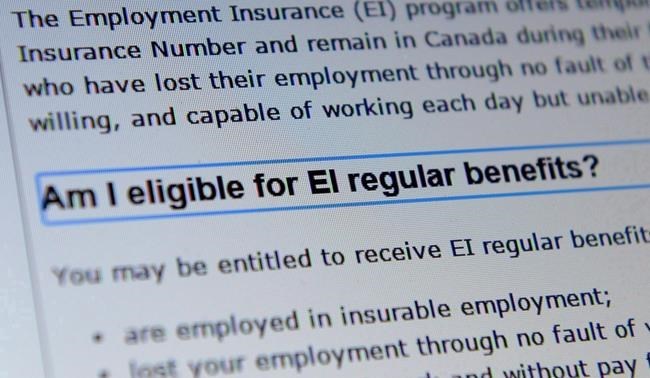OTTAWA — The federal government could roll out significant new supports for displaced Canadian workers within days, which Prime Minister Justin Trudeau suggested could be the first of several steps to deal with the economic shock from COVID-19.
Speaking outside his Ottawa residence, Trudeau promised details as early as Tuesday on the size and scope of the Canadian government's spending plans to cushion the economy facing an acute, and unforeseen, shock.
The government's focus right now is to ensure Canadians staying home from work have money to buy groceries and pay their rent, he said, adding that these were measures "we will be moving forward with in the coming days to ensure that people can keep themselves and their loved ones safe and healthy."
Already, the government has eased access to employment insurance benefits to provide more help to workers out of a job because of COVID-19, and offered to lend out $10 billion through Crown corporations like the federal government did just over a decade ago during the 2009 financial crisis.
Trudeau says there are other measures the government is looking at to ensure that in the short-term, Canadians are able to support themselves and each other.
"In the medium-term and then into the long-term we will need to invest significant amounts to restore people's confidence in the economy, to restore the kind of growth that is going to ensure a better future for all Canadians," Trudeau said.
"We will do those things as we need."
The novel coronavirus outbreak has disrupted everyday life and sent consumer spending — the backbone of the economy — into a tailspin as Canadians heed the warnings of public health officials to avoid going out to slow the spread of the disease.
Key North American indexes have dropped in value, dropping into what's known as a "bear market" that can foreshadow a recession. In response, central banks have tried to pump money into financial markets to stabilize the system, and slashed key rates.
The Bank of Canada is expected to drop its rate further in April from the one per cent cut it has already made, including an unscheduled cut on Friday that left its target overnight rate at 0.75 per cent.
The U.S. Federal Reserve went even further on Sunday night, bringing its key rate effectively to zero, which did little to calm choppy economic waters.
In a research note, RBC senior economist Josh Nye said markets are looking for governments to spend with the same urgency that central banks displayed in the last few days, adding that transfers to households and affected businesses can fill in gaps in credit.
The problem the government faces in the short-term is significant: New research says broad swaths of the Canadian workforce won't have access to paid leave from their employers or existing federal help should they be forced off the job due to COVID-19.
The research note from the Canadian Centre for Policy Alternatives says only 38 per cent of sickness leave and 23 per cent of family leave of more than a week was covered by employers in 2019. About three-quarters of workers in higher-paying jobs had time off covered by their employers, but just over 10 per cent of lowest-income workers received a similar benefit last year.
Further complicating the issue, the report says most unemployed workers didn't qualify for employment insurance benefits in 2018, the most recent numbers available.
David Macdonald, the centre's senior economist, says most of the workers who could use financial assistance can't easily work from home right now, meaning closed schools, self-isolation or quarantine will mean lost shifts and plummeting incomes — or force those who are sick to still go into work.
He says the federal government will likely have to create an emergency benefit for workers who can't access EI benefits, either because they don't qualify or because they're not laid off, but just off work.
The Liberals have said little about how much they plan to spend — economists generally suggest about one per cent of GDP, or roughly $20 billion — but at least one mechanism being considered is a temporary increase in the monthly Canada Child Benefit.
Macdonald said targeting benefits to lower-income households would also help economically because they would be forced to spend the money immediately on housing and food, unlike high-income households that may have financial room to save the extra money.
This report by The Canadian Press was first published March 16, 2020.
Jordan Press, The Canadian Press



